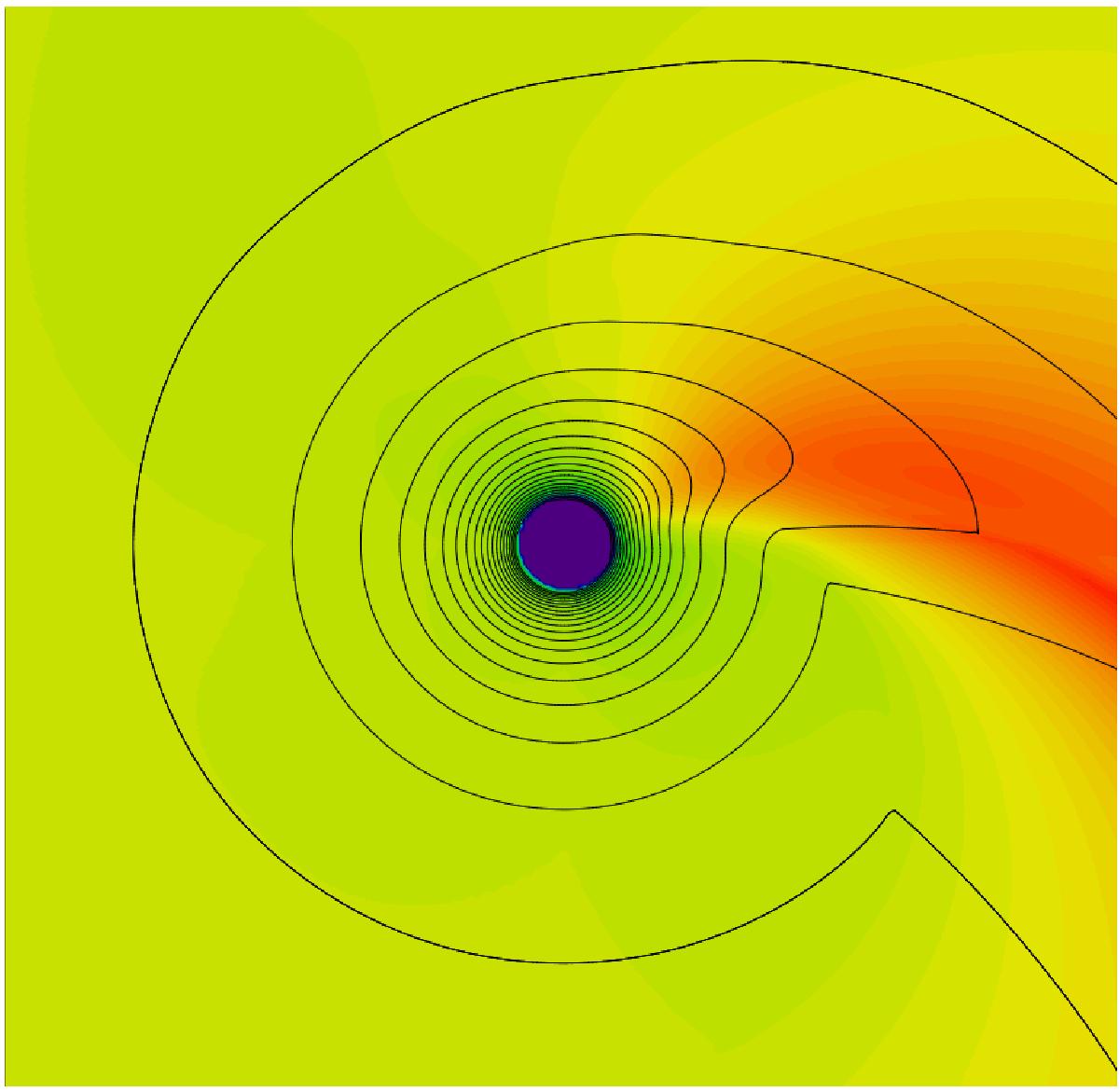Fig. 1

An example of hydrodynamic calculations of the CIR in the wind of the B0.5 Ib supergiant J Pup. There is a bright spot on the stellar surface producing a single CIR. The spot is assumed to be 20% brighter than the stellar surface, and is characterized by an angular diameter of 20°. A full revolution of the CIR occurs in ~10.3 days. The colors code the wind density of the CIR model relative to the density of the unperturbed, smooth wind. The maximum over-density in the CIR is by a factor 1.22 (red colors). In wind regions shown in yellow this ratio hardly deviates from unity, while in the green regions the wind is rarified by a factor lower than 0.97. The black solid drawn lines show 20 overplotted contours of equal radial velocity in the hydrodynamic rotating wind model. The outermost curve marks the isovelocity line at an outflow velocity of 1460 km s-1, while the curves at smaller distances from the stellar surface are shown for decreasing steps of 73 km s-1. The case with two CIRs mentioned later in this paper is produced by assuming an additional spot that is 8% brighter than the surface of the supergiant star and has an angular diameter of 30°.
Current usage metrics show cumulative count of Article Views (full-text article views including HTML views, PDF and ePub downloads, according to the available data) and Abstracts Views on Vision4Press platform.
Data correspond to usage on the plateform after 2015. The current usage metrics is available 48-96 hours after online publication and is updated daily on week days.
Initial download of the metrics may take a while.


